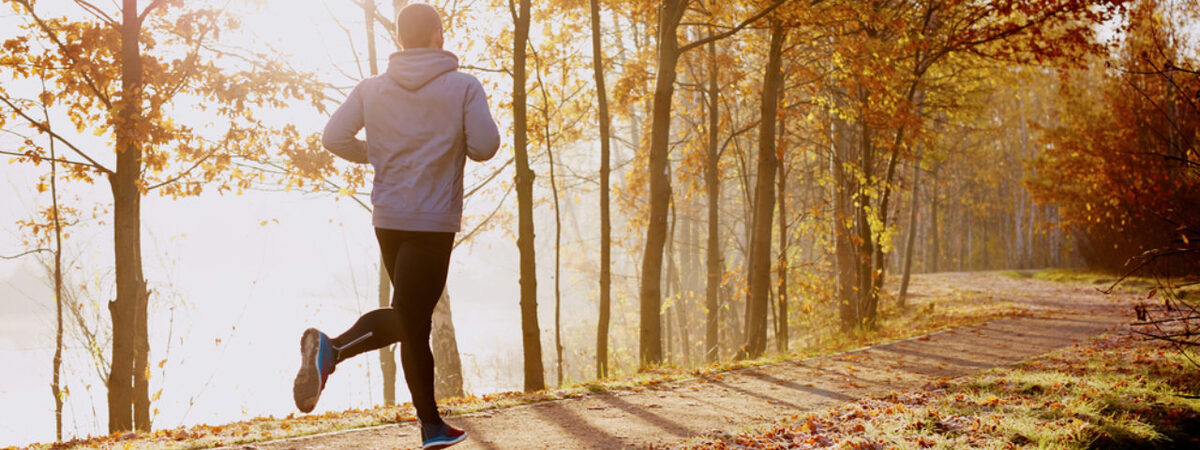
Winter’s here get out your running gear!
5 things to think about before you start running.
Running is an excellent and easily accessible way to get moving and build fitness. When better to start than now! Here are a few tips to consider to help prevent an injury from ruining the fun.
#1 Build slowly
Rapid and excessive increases in load are a common cause of soft tissue injuries. These dramatic spikes in load exceed the load capacity of the involved muscles, tendons and ligaments, increasing the tissues’ susceptibility to injury.
You might pop out for a short run and because it feels good, you decide to run a couple more miles than you originally intended. Although at the time it is pain-free, spikes in load are likely to make you more vulnerable to injury in the long-run; with the consequences becoming apparent 3-4 weeks post activity (Drew & Finch, 2016).
Bearing this in mind you should be aiming to increase your weekly training load gradually, at no more than 10% each week (Harrison et al., 2018).
#2 Build one thing at a time
There are numerous ways you can gradually increase the load each week. Try not to increase them all at the same time - pick one to build on each week.
Distance – How far you are running.
Time – How long you are running for.
Frequency – How often you are running.
Speed – The pace you are running at.
#3 Do your strengthening homework
Integrating 2-3 resistance training sessions a week will help to improve both your running performance and decrease your risk of injury (Blagrove et al., 2018). By increasing the surrounding tissues’ resilience and strength, the likelihood of muscular fatigue (which can lead to poor running mechanics), poor performance and injury will be reduced. This can be as simple as doing some bodyweight exercises to begin with, for example: lunges, step ups, squats, planks, hollow body holds etc.
#4 Recovery
It is important to allow the body to recover and repair, both physically and psychologically to encourage the body to adapt to the stress of exercise. Here are a few examples of how you can promote your recovery:
Sleep - Ensuring you get enough sleep will assist your recovery. Sleep deprivation is linked to inhibition of optimal recovery processes (Nedelec et al., 2015), so try and aim for between seven and nine hours a night (Hirshkowitz et al., 2014).
Stretching/mobility – Stretching can help to lessen the feeling of stiffness and discomfort after a run. It is reported that stretching can accelerate recovery and return the tissues to baseline lengths faster, which in turn aims to decrease risk of injury (Reuther et al., 2016). Working on your mobility a couple of times a week is also likely to be beneficial in addressing restricted range of motions and improving your running performance.
Sports massage – Having regular sports massage can aid recovery as it aims to reduce post exercise muscle tone and stiffness by normalising the delivery of nutrients and oxygen as well as the removal of waste products. Furthermore, it can be used to deactivate symptomatic trigger points, that in excess can cause biomechanical abnormalities which can lead to injury. It also has great psychological benefits, helping you to mentally recover from training as well as physically.
#5 Get niggles checked.
Don’t run through pain. If you experience any painful or symptomatic niggles during or after a run it is a good idea to get them checked out. Although at the time it may only seem like a little discomfort, it is likely that running through the symptoms will make the problem worse. Getting them checked early will help to prevent these niggles from turning into a long term or chronic injury.
At Injury Active we keep the assessment, treatment and rehabilitation specific to you. Observing you running allows us to identify where the discomfort or pain may be originating from. We will then work with you using a variety of techniques to improve your movement and symptoms.
If you have a niggle or an injury you would like taking a look at, or you think you may benefit from a sports massage, head over to our website to book online or you can email us: naomi@injuryactive.com or call us 07907512139.
References
Blagrove, R. C., Howaston, G. and Hayes, P. R. (2018) Effects of Strength Training on the Physiological Determinants of Middle- and Long-Distance Running Performance: A Systematic Review. Sports Medicine, May; 48(5); 1117-1149.
Drew, M. K. and Finch, C. F. (2016) The Relationship Between Training Load and Injury, Illness and Soreness: A Systematic and Literature Review. Sports Medicine, Jan; 46 (6); 861-883
Harrison, P. W., Johnston, R. D. and Quain, D. (2018) Literature Review: Examining the Relationship Between Training Load and Both Performance and Injury Risk in Australian Football. Journal or Australian Strength and Conditioning, 26 (2); 69-81
Hirshkowitz, M. et al. (2014) National Sleep Foundation’s Sleep Time Duration Recommendations: Methodology and Results Summary. Sleep Health, Mar; 1(1); 40-43
Nedelec, M., Halson, S., Abaidia, A. et al. (2015) Stress, Sleep and Recovery in Elite Soccer: A Critical Review of the Literature. Sports Medicine, Jul; 45; 1387-1400
